All About King Charles and Queen Camilla's Coronation Robes, Jewels and Regalia
- Oops!Something went wrong.Please try again later.
King Charles and Queen Camilla are expected to wear both centuries-old attire and new pieces for their May 6 coronation
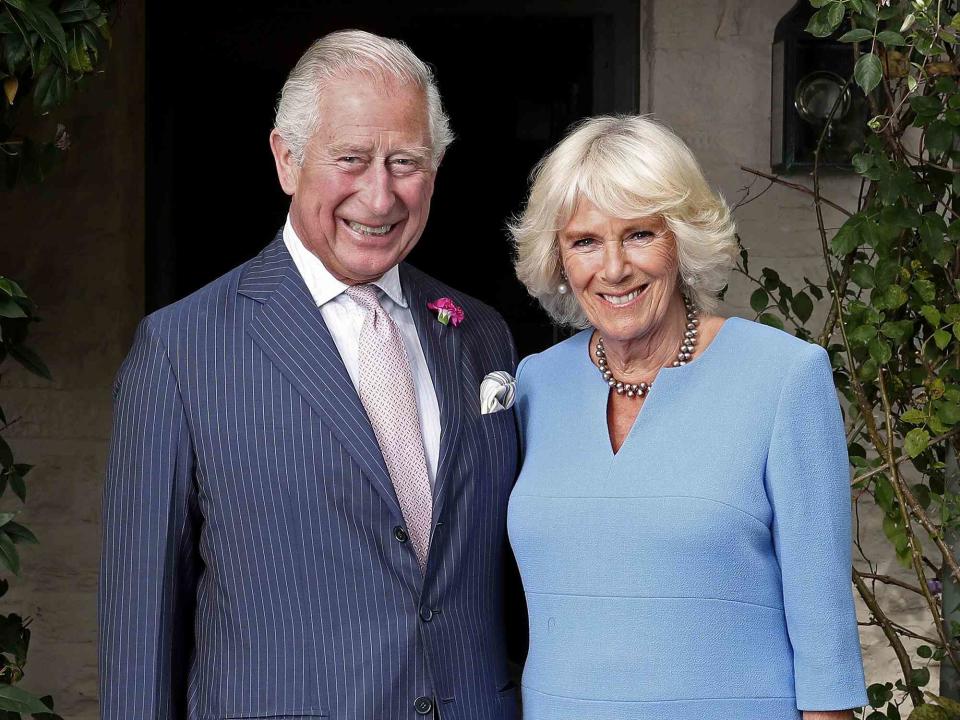
King Charles and Queen Camilla's historic coronation is nearly here.
Although the ceremony is steeped in nearly 1,000 years of tradition, the palace revealed that the new monarch plans to bring some updates to the centuries-old rituals for his coronation on May 6, 2023. When it comes to their wardrobe, the King and Queen Consort are also expected to mix modern and traditional elements.
Many of the crowns, jewels and robes worn during the coronation date back hundreds of years. Like the monarchs before him, King Charles will be crowned with the St. Edward's Crown, specifically reserved for the coronation ceremony. He will also be presented with several pieces from the Crown Jewels, all of which have different sacred meanings.
"The Coronation will reflect the monarch's role today and look towards the future, while being rooted in long-standing traditions and pageantry," Buckingham Palace said in a statement.
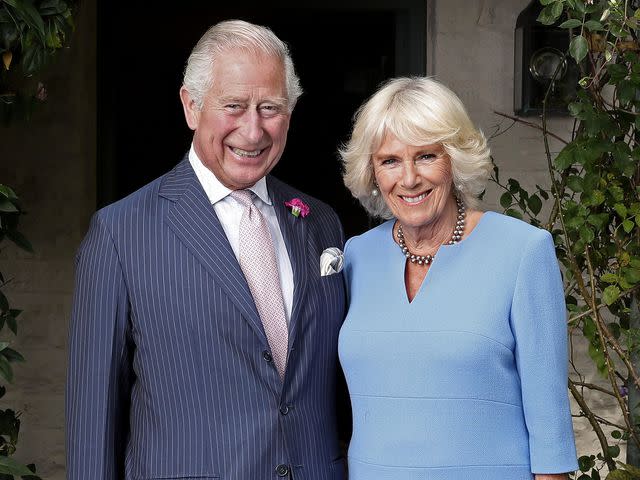
The King reportedly plans to scale back the ceremony's length and guest list and do away with some elements of the opulent dress code worn at previous coronations.
From their coronation crowns and robes to their new commissions, here is everything to know about King Charles and Queen Camilla's coronation wardrobe.
King Charles' Coronation Crowns
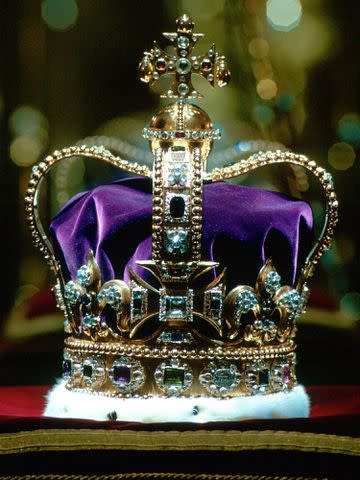
King Charles will wear two separate crowns on his coronation day. The first is St. Edward's Crown, which is the headpiece that is typically used at the moment of crowning. Queen Elizabeth wore it at her coronation in 1953.
St. Edward's Crown is considered the centerpiece of the Crown Jewels and has centuries of history behind it. It was made in 1661 for King Charles II as a replacement for a medieval crown that was melted down in 1649 — but its history goes back even earlier, according to the palace. It is believed that the original crown dates as early as the 11th century to Edward the Confessor, the last Anglo-Saxon English king.
Charles II commissioned the royal goldsmith, Robert Vyner, to create the replacement crown in 1661. It is not an exact replica of the original but does have similar design features, including four crosses-pattée, four fleurs-de-lis and two arches. It has a solid gold frame set with several semi-precious stones and also features a velvet cap with an ermine band.
In December 2022, St. Edward's Crown was removed from the Crown Jewels display at the Tower of London to prepare it for the historic ceremony. The palace stated that the crown would undergo "modification work" before the May 2023 coronation.
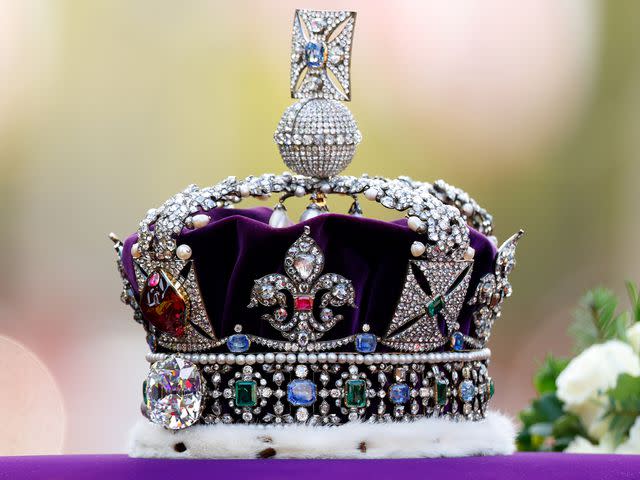
According to Buckingham Palace, King Charles will also wear the Imperial State Crown. The current Imperial State Crown was made in 1937 for the coronation of King George VI — Queen Elizabeth's father and King Charles' grandfather — and was most recently seen on top of the late Queen's coffin during her state funeral in September 2022.
Compared to St. Edward's Crown, the Imperial State Crown is lighter and also used more often (like at the State Opening of Parliament).
King Charles' Coronation Robes
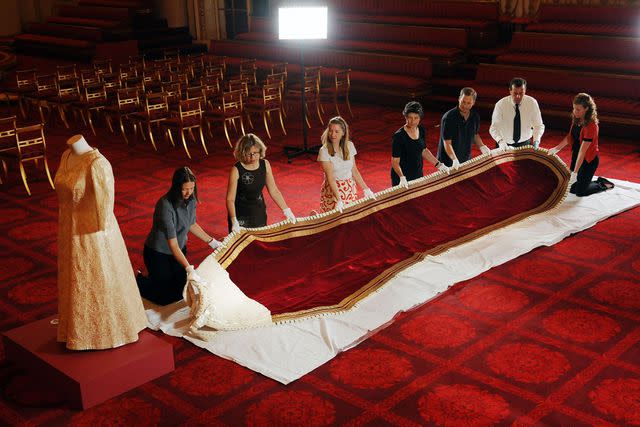
Though coronations have occurred at Westminster Abbey since 1066, the palace has said that King Charles' crowning ceremony will "look towards the future" while maintaining the "long-standing traditions and pageantry." This balance of historical and modern elements is expected to be especially evident in his wardrobe.
The King will wear several historical robes throughout the religious ceremony. The order and importance of the coronation robes are detailed in the Liber Regalis, or Royal Book, a 14th-century manuscript that serves as the official guide for coronation ceremonies, according to Westminster Abbey.
King Charles will enter Westminster Abbey wearing the Robe of State, which is made of crimson-colored velvet and was worn by King George VI, King Charles' grandfather, at his 1937 coronation. This robe is also known as the Parliament Robe, as it is worn by the reigning monarch for the State Opening of Parliament. The Royal School of Needlework has conserved the velvet, while the lining and gold lace was conserved by Ede and Ravenscroft, the oldest tailor and robe maker in London.
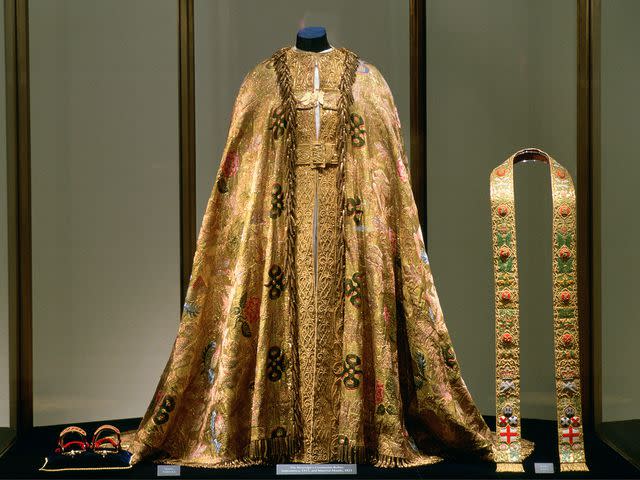
Before the anointing, which is considered the most private part of the ceremony, King Charles will change into the Colobium Sindonis, a simple white tunic that symbolizes "purity before God." The Colobium Sindonis is covered by the full-length, gold-embroidered Supertunica.
Though the Colobium Sindonis will most likely be made new for the King, the Supertunica was made for the coronation of George V in 1911. It has since been worn by both George VI in 1937 and Elizabeth II in 1953.
On top of the Supertunica will be the Robe Royal and the Stole Royal. The Robe Royal, or Imperial Mantle, is a gold cloak that was originally made in 1821 for the coronation of George IV, according to the Royal Collection Trust. Its design is based on a priest's robe and features foliage, crowns, fleurs-de-lis and eagles, with colored roses, thistles and shamrocks found throughout. The golden clasp is in the shape of an eagle. It is the oldest robe in the coronation collection and will most likely be worn as is by the King.
The Stole Royal is a narrow band of gold silk made for Queen Elizabeth's crowning in 1953. It was embroidered with national, religious and Commonwealth emblems in both gold and colored threads. Charles could reuse his mother's or have his own made.
The Robe Royal and Stole Royal are removed and replaced with the Imperial Robe during the closing procession. Also known as the Robe of Estate (not to be confused with the Robe of State), the Imperial Robe is made of purple velvet — as opposed to the crimson color donned during the King's entrance. The embroidery on Elizabeth II's Imperial Robe featured 18 different types of gold thread and took 12 embroiderers more than 3,500 hours to make.
King Charles' Coronation Jewels
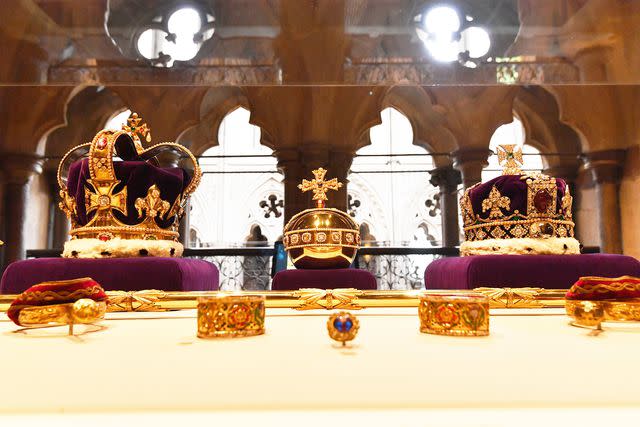
King Charles will be presented with several pieces of royal jewelry during his coronation, all of which are part of the Crown Jewels. According to Buckingham Palace, these include spurs, bracelets, scepters, a ring, an orb and a sword.
After King Charles is dressed in the various robes and garments involved in the crowning ceremony, he will be presented with the coronation spurs, which feature a Tudor rose and velvet straps, according to the Royal Collection Trust. The spurs are the first symbols of sovereignty presented to the King during the coronation and represent knighthood. Though spurs have been a part of coronations since 1189, the current spurs were made in 1661 for Charles II and were altered with new straps in 1820 for George IV. They were originally fastened to the sovereign's feet, but since the 1600s have simply been placed at the monarch's ankles.
The King will then be presented with the jeweled Sword of Offering, which dates back to 1820 and is full of symbolic emblems. Both sides of the blade feature roses, thistles and shamrocks, which are England, Scotland and Northern Ireland's national emblems, respectively. The sword is also adorned with diamonds, emeralds and rubies.
The design of the sword was suggested by George IV and was made for his coronation in 1821. It was not used in a coronation ceremony again until 1902 at the crowning of Edward VII; it has been used at every coronation since. During the ceremony, the archbishop will bless the sword and present it to the King for "the protection of good and the punishment of evil."
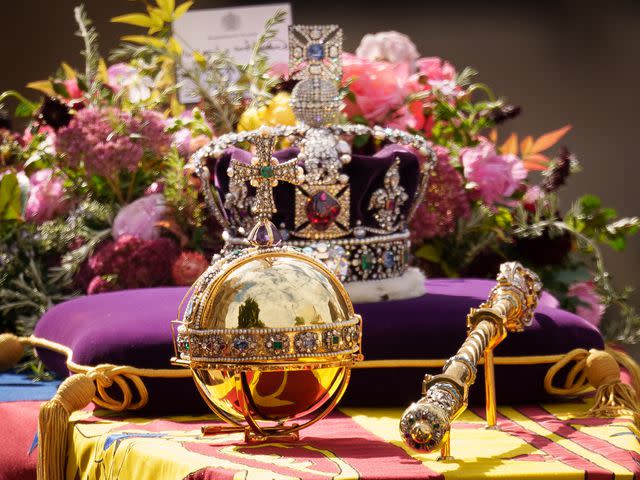
King Charles will also be given gold armills — bracelets representing sincerity and wisdom — and the Sovereign's Orb representing Christian sovereignty. The armills were made for Elizabeth II in 1953 to replace the originals that had been used since 1661. The gold bracelets feature a Tudor rose clasp and red velvet lining.
The Sovereign's Orb is a hollow gold sphere with a cross on top, representing the monarch's power. It is adorned with emeralds, sapphires, rubies, diamonds, pearls, amethyst and a glass stone.
The archbishop will place the Sovereign's Ring on the fourth finger of Charles' right hand as a symbol of "kingly dignity." It was made in 1831 for William IV and features an octagonal sapphire adorned with both rubies and diamonds.
Finally, King Charles will be presented with two sceptres: the Sovereign's Sceptre with Cross and the Sovereign's Sceptre with Dove. Both were made in 1661 for Charles II's coronation, though the Sceptre with Cross has undergone several alterations over the years.
The Sceptre with Dove is also known as the Rod of Equity and Mercy, and it represents the monarch's spiritual role (with the dove symbolizing the Holy Spirit). The Sceptre with Cross represents the monarch's secular power and "is associated with good governance," per the Royal Collection Trust. It famously features the Cullinan I diamond — also known as the Star of Africa — which, at 530.2 carats, is the largest stone cut from the Cullinan diamonds. The sceptre is also decorated with rubies, emeralds and sapphires.
Queen Camilla's Coronation Crown
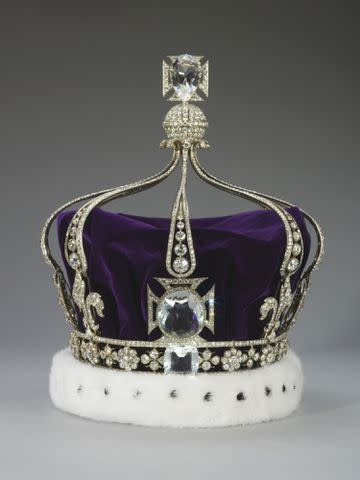
In February, the palace revealed that Queen Camilla would wear Queen Mary's Crown when she is crowned alongside King Charles in May. The crown, which is set with 2,200 diamonds, was worn by Queen Mary at the coronation of her husband, George V, in 1911.
This will be the first time in recent history that an existing crown — rather than a new commission — will be used in the coronation of a Queen Consort, in the "interests of sustainability and efficiency," according to the palace. The crown was removed from the Tower of London in February to undergo modification work ahead of the May coronation.
Specifically, in a special tribute to Queen Elizabeth, the crown will be altered to include the Cullinan III, IV and V diamonds — which were a part of the late monarch's personal jewelry collection. (She often wore them as brooches.) Additionally, the palace stated that four of the crown's eight detachable arches will be removed "to create a "different impression" from when it was worn in 1911.
The crown does not include the controversial Koh-i-Nûr diamond, which was a part of the original 1911 design. The large diamond is "a symbol of conquest" as it was taken by the British East India Company in 1849 from India's 10-year-old king Maharaja Duleep Singh and given to Queen Victoria. In 1937, the diamond was removed and placed in the Queen Mother's crown, according to the Royal Collection Trust.
In October 2022, a spokesman for the Indian government told The Telegraph that "the use of the crown jewel Koh-i-Nûr brings back painful memories of the colonial past." The diamond is on display at the Tower of London in the Queen Mother's crown.
Queen Camilla's Coronation Gown and Robe
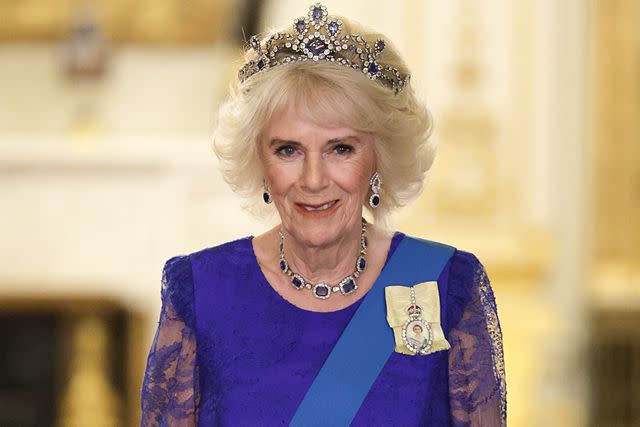
Queen Camilla has reportedly chosen designer Bruce Oldfield to design her coronation gown, according to The Telegraph. Queen Camilla has worn Oldfield's designs on a number of occasions. He was also one of Princess Diana's preferred designers and was behind several of her iconic dresses in the 1980s.
Details of Queen Camilla's coronation gown will most likely remain tightly guarded until the coronation ceremony. Neither Oldfield nor Buckingham Palace has officially commented on the gown or its designer.
In late April, photos were released of the Royal School of Needlework's embroidery team working on the coronation robes that Queen Camilla and King Charles will wear for the ceremony.
Camilla's Robe of State, which she will wear upon arrival at Westminster Abbey, is made of crimson velvet and was originally made for Queen Elizabet's 1953 coronation.
The Queen Consort's Robe of Estate, which will be worn on departure from the Abbey, was made specifically for her by Ede and Ravenscroft and designed and hand embroidered by the Royal School of Needlework. It is a purple velvet, matching the King's Robe of Estate.
Queen Camilla's Coronation Jewels
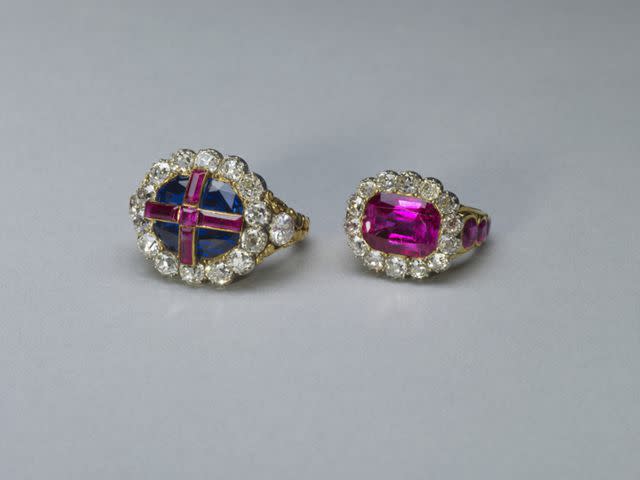
Similar to her husband, Camilla will be presented with several symbolic items from the Crown Jewels during the coronation ceremony, including a ring, two scepters and an orb.
Camilla will be presented with the Queen Consort's Ring, which will be placed on the fourth finger on her right hand during the crowning ceremony. The ring dates back to 1831 when it was created for Queen Adelaide and features an octagonal-cut ruby surrounded by 14 diamonds. It has been worn by every queen consort since Edward VII's coronation in 1902.
The Queen Consort will also receive an orb with a similar design to her husband's — it features a cross atop a sphere, with gemstones and pearls dividing it into three areas. It symbolizes imperial power and dates back to 1689 when it was created for Queen Mary II in her joint crowning with her husband William III, the Royal Collection Trust detailed.
During her coronation, Camilla will also be presented with two sceptres: the Queen Consort's Sceptre with Cross and the Queen Consort's Rod with Dove. Both date back to Mary of Modena's coronation in 1685 and both have been used in every queen consort coronation since. They carry similar symbolism to the King's, with the dove representing the Holy Spirit.
Aside from the ceremonial jewels, Camilla will most likely wear additional jewelry — such as a necklace and earrings — to the coronation in May. One possibility is the coronation earrings, which were commissioned for Queen Victoria in 1858, according to the Royal Collection Trust. They were worn at the coronations of consorts Queen Mary in 1911 and Elizabeth, later Queen Mother, in 1937; Queen Elizabeth II also wore them at her coronation in 1953.
Camilla could also wear the coronation necklace, which was also made for Queen Victoria in 1858. It features 25 diamonds and was worn at the coronations of queen consorts Alexandra, Mary and Elizabeth, as well as by Queen Elizabeth II at her coronation.
For more People news, make sure to sign up for our newsletter!
Read the original article on People.

